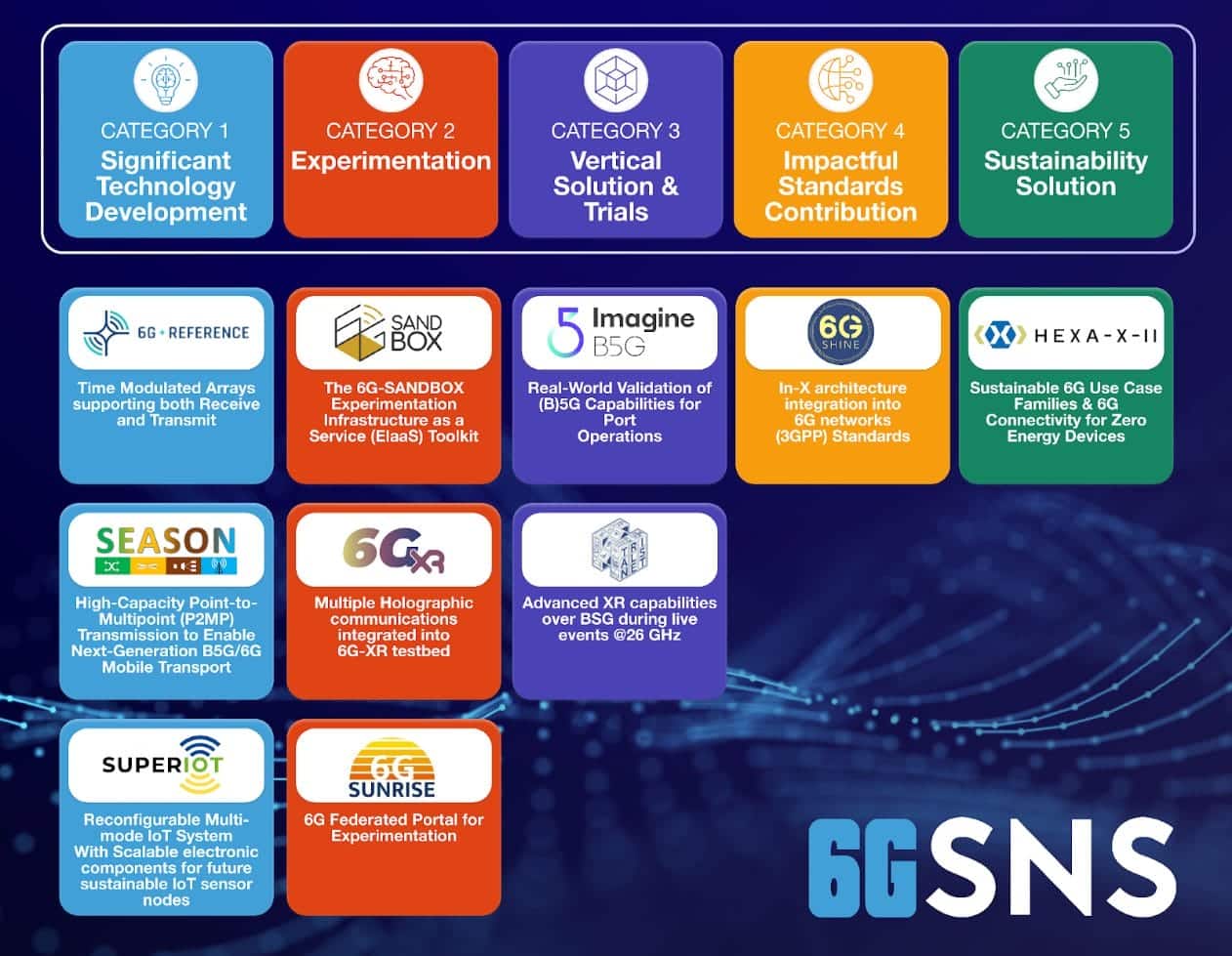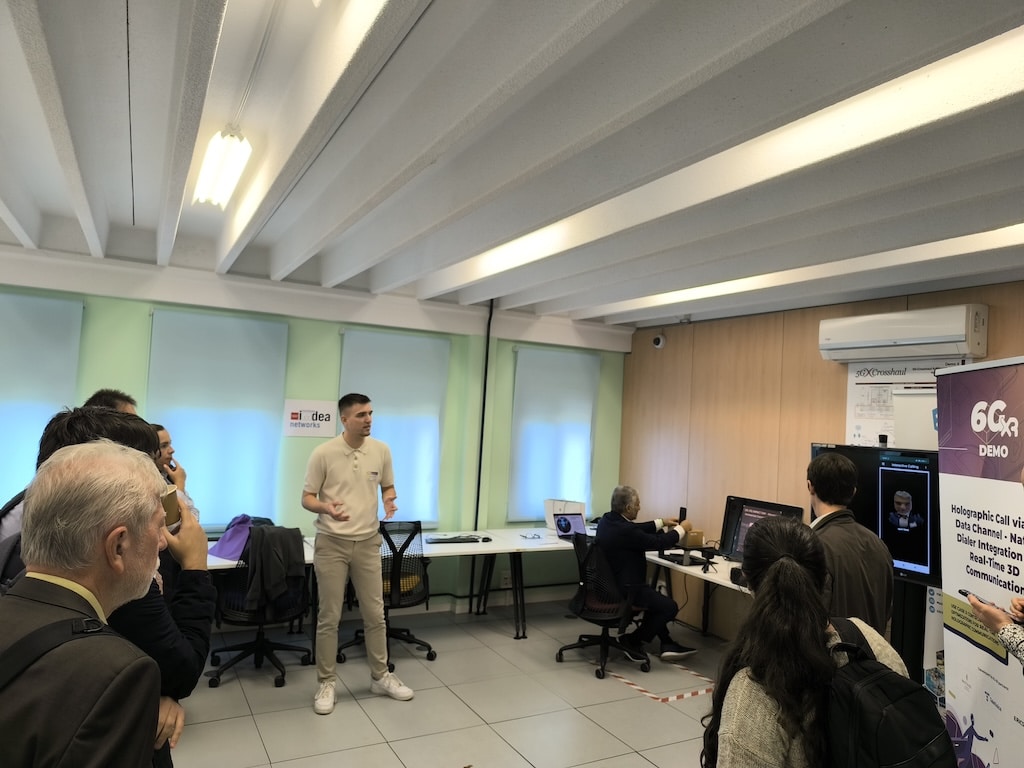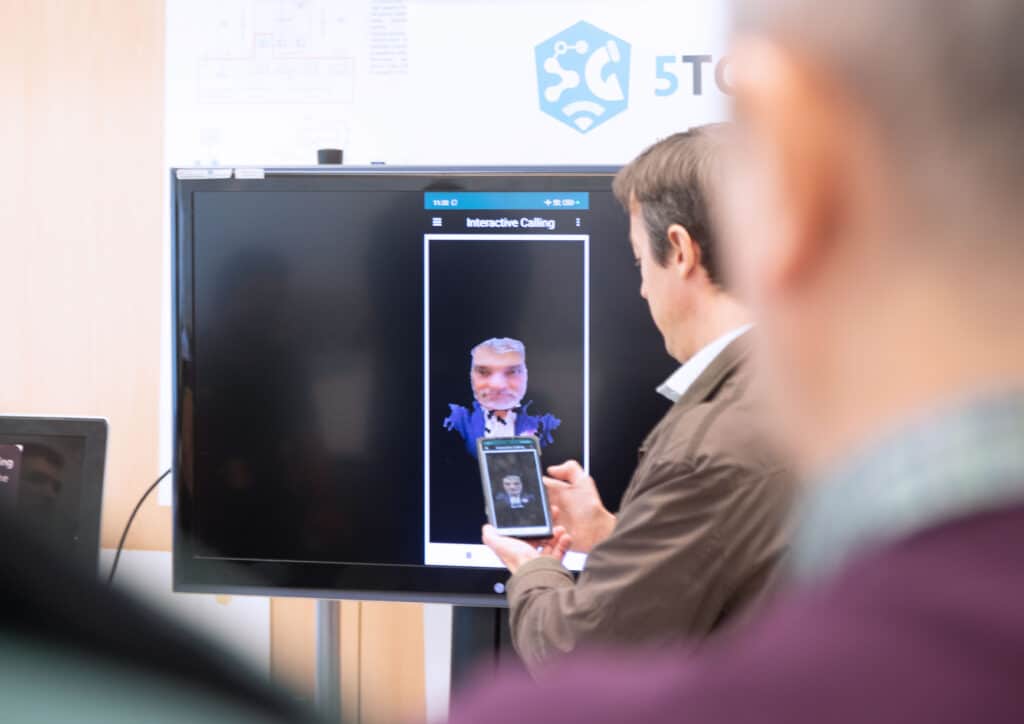6G-XR’s Holographic Communication Named Among the SNS JU 2025 Top-10 Key Achievements

The 6G-XR project has been recognised as one of the Top-10 Key Achievements of 2025 by the Smart Networks and Services Joint Undertaking (SNS JU), marking a significant milestone for European research in immersive communication technologies. The distinction highlights one of 6G-XR’s advanced accomplishments: “Multiple Holographic Communications Integrated into the 6G-XR Testbed”, which was chosen in the Experimentation category for its contribution to understanding how real-time, multiuser immersive communication services can be delivered natively over future 6G networks.
Two Distinct Pipelines for Real-Time Holographic Communication
The project developed and integrated two complementary holographic communication pipelines into the 6G-XR testbed, each addressing different usage scenarios and deployment constraints.

1. Augmented Reality (AR) Pipeline via IMS – A World First for Network-Native Holography
In this pipeline, 3D holograms are transmitted over the IP Multimedia System (IMS) data channel. Because IMS is natively integrated with the mobile network, the hologram can be received directly in the smartphone’s native dialer, without requiring any third-party application.
This represents the world’s first demonstration of a network-native holographic call, validating that holographic communication can be treated as a standard service integrated into future 6G infrastructures.
2. Virtual Reality (VR) Pipeline via Over-the-Top (OTT) Rendering
The second pipeline delivers volumetric and VR scene content using an OTT media service approach. Processing components — such as the Session Manager and Remote Renderer — run as Cloud-Native Network Functions (CNFs) instantiated in distributed edge nodes.
This design provides two key advantages:
- Scalability: The system can support more simultaneous holographic users by deploying additional CNFs.
- Accessibility: Moving rendering and media processing to the edge reduces computational demands on end devices, enabling lightweight headsets or consumer-grade hardware to participate.
Together, the two pipelines show how different architectural choices can support the needs of future holographic services across smartphones, XR headsets, and mixed-reality environments.
Scientific Foundations and Technical Contributions
The development is supported by a series of technical deliverables and peer-reviewed publications, including:
- Work on multiuser volumetric video and Multipoint Control Unit (MCU) architectures (Fernandez et al., ACM Multimedia 2023)
- Studies on edge rendering architectures for XR and end-to-end performance (Yeregui et al., IEEE BMSB 2024)
- Evaluations of remote rendering frameworks for VR (Mejias et al., IEEE MeditCom 2025)
These contributions underline the robustness of the system design and its alignment with emerging 6G research directions in cloud-native compute, edge orchestration, and XR service delivery.
A Strong Validation of the European 6G Vision
The SNS JU Top-10 selection process evaluated 188 submissions from 63 ongoing projects. Criteria included innovation, experimental validation, technological maturity, contribution to 5G/6G evolution, and potential market impact. The recognition of 6G-XR demonstrates its role in advancing Europe’s strategic vision for 6G — particularly in cloud-native XR, distributed edge computing, and immersive communication technologies.
The SNS JU has released an online repository showcasing the Top-10 achievements along with the wider set of submissions. A public webinar will be organised soon to present the tool and discuss its implications for the future of connectivity.
Showcased Live During the 6G-XR Impact Day
The achievement was demonstrated publicly during the 6G-XR Impact Day, held on 28 October 2025 at NEXTONIC – IMDEA Networks Institute in Madrid, Spain. Attendees observed live holographic communication sessions running on the 6G-XR testbed, offering a concrete preview of what real-time 3D communication could look like in a future 6G environment.


Next Steps: From Technical Validation to Human-Centred Evaluation
With both holographic communication pipelines now fully deployed in the 6G-XR test facilities, the next phase of work focuses on a comprehensive evaluation of their performance and user experience. On the technical side, the team will conduct detailed measurements using Key Performance Indicators (KPIs), assessing factors such as end-to-end latency, bandwidth consumption, rendering efficiency, and the stability of hologram transmission. These tests will help determine whether the pipelines meet the engineering requirements needed for real-time, high-quality immersive communication.
In parallel, the project will carry out user-centric assessments guided by Key Value Indicators (KVIs). These evaluations involve real users interacting with the holographic system to provide feedback on elements such as perceived visual quality, responsiveness, ease of interaction, and overall comfort. This step is essential for understanding how the technology performs in realistic scenarios and whether it supports broader societal goals such as accessibility, inclusiveness, and well-being.
Together, these technical and experiential evaluations will offer a complete picture of the pipelines’ readiness for future 6G applications and help define the priorities for further refinement and standardisation. As the project concludes, the 6G-XR consortium remains committed to advancing research on immersive communication services and supporting Europe’s transition toward 6G-ready technologies. More updates and technical results will continue to be shared through the project’s communication channels.
